by Lisa Cooke | Sep 30, 2013 | 01 What's New, Inspiration, Organization
 This post wraps up our four-week series on disaster planning for genealogists in honor of National Preparedness Month in the United States. In previous weeks, I talked about assessing our collections of family history artifacts and research materials; creating duplicates of one-of-a kind items; and protecting our most valuable items properly.
This post wraps up our four-week series on disaster planning for genealogists in honor of National Preparedness Month in the United States. In previous weeks, I talked about assessing our collections of family history artifacts and research materials; creating duplicates of one-of-a kind items; and protecting our most valuable items properly.
Last but certainly not least in our preparedness process, we want to share what we have with others and keep our digital files fresh. I’ll cover both of these steps in this post.
SHARE! First, after you’ve copied, scanned or photographed your family archive, spread your digital archive around by sharing it with others. If you leave all your files on the computer in the same building as your originals (your home), one house fire or theft could easily take out both your original and your carefully-made backups. Instead, disseminate your copies to at least two additional physical locations.
For electronic data, I recommend cloud storage like Dropbox, or iCloud. That immediately gets a copy away from your physical home base, but keeps it accessible to you (and others, if you like) from any location, computer or mobile device. Also consider distributing copies to fellow relatives or your genealogy buddies, the first because they should have family information anyway and the second because your genealogy buddies will likely take good care of your files. Just make sure those who receive your files don’t all live in the same general area, or again, the same typhoon may destroy all your copies. And check your CDs and cloud storage periodically to make sure the files are still in good shape.
UPDATE. Finally, every once in a while you’ll need to update your copies. It may sound unthinkable that someday your PDFs or JPGs won’t be readable, or that your computer won’t have a CD drive. But file formats do eventually become obsolete and storage media do decay and corrupt over time. Keep listening to the Genealogy Gems podcast so you’ll be aware when major transitions in technology happen. I’ll tell you how and when to update specific file formats and storage types that are starting to phase out.
I almost forgot–the last and best step in all emergency planning. When you’ve done everything you can to protect your family legacy from disaster, breathe a deep sigh of relief. The peace of mind alone is worth all this effort!
by Lisa Cooke | Jul 20, 2016 | 01 What's New, Immigration |
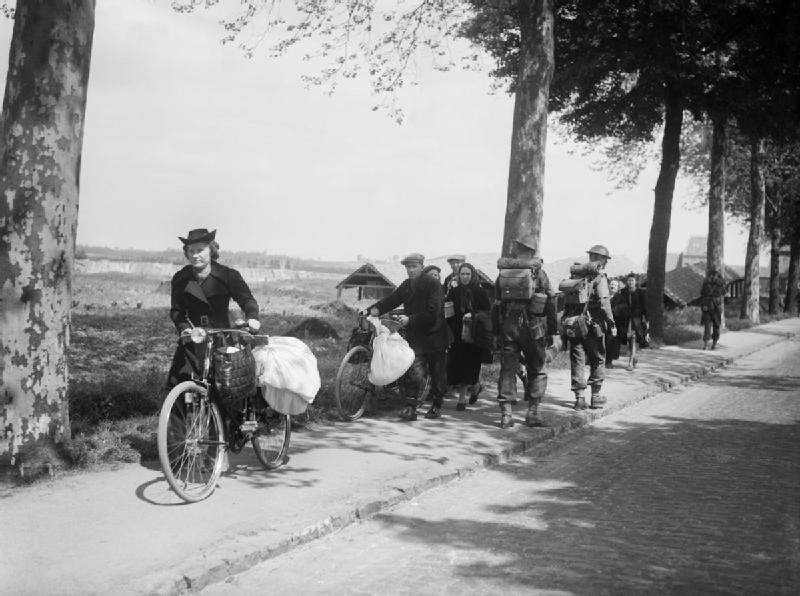
Traveling ancestors created records when they left the country of their origin and when they arrived at their new residence. We often talk about immigration, with an I, but have you researched your ancestors emigration records with an E?
When our ancestors traveled from one place to another, they became two types of migrants. First, they were Emigrants with an E, and then, they were Immigrants with an I. Emigration with an E means someone exiting a country and immigration with an I means someone coming into it. Let’s learn more about emigration…with an E.
I live in a country that doesn’t have much in the way of historical emigration records, but other countries do. I have to remember these emigration records when I start looking overseas for my relatives who were crossing the pond to live here.
EXAMPLES OF EMIGRATION RECORDS
Swedish parishes kept emigration records which are now on Ancestry dating back to 1783. According to the database description, this record set is pretty complete, representing about 75% of those who actually left the country. These rich records can provide place of origin, destination, and the date and place of departure.

For a time, the U.K. also kept outward passenger lists of those leaving the U.K. ports for destinations outside of Europe. The lists include British citizens and those traveling through the U.K. These passenger lists no longer survive for the years before 1890, but they are on Ancestry for the years of 1890-1960. Of course, while writing this post I just had to take a moment to do a bit of searching myself, and that lead to this genealogy gem: my husband’s grandfather, and his parents embarking at Liverpool in 1912!
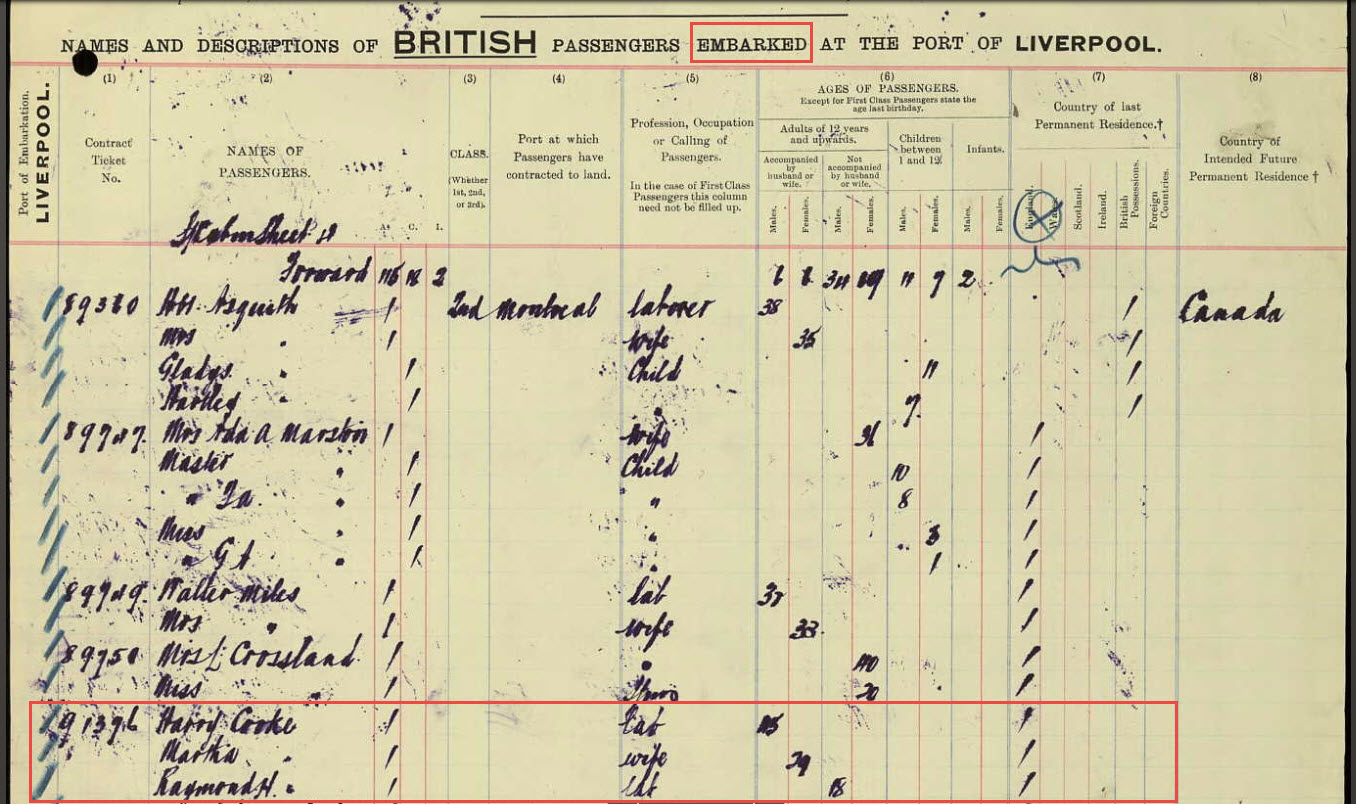
I also spotted this interesting item in the database description. Quoted from the U.K. National Archives website:
“Between 1890 and 1920, among the highest tonnage of ships were leaving British ports bound for North America. Many passengers were emigrants from Britain, Ireland, and Europe. European emigrants bound for America entered the United Kingdom because traveling steerage was less expensive from a British port than from a port in Europe. The shipping companies imposed restrictions on passengers registering; passengers had to have British residency of six weeks to qualify. Many passengers too impatient to qualify for residency changed their names to avoid detection.”
A name change would certainly present a challenge, but it’s very good to know to be on a look out for that situation. This is another example of why it is so important to read the description of the databases you search.
MORE EMIGRATION RECORD COLLECTIONS
A quick search of Ancestry’s card catalog shows emigration collections for Prussia, Switzerland, a few parts of Germany, Jewish refugees from several nations in Europe, and an interesting collection of Dutch emigrants who came to North America with the help of the Canadian and Dutch governments.
Another excellent resource is the FamilySearch Wiki. You can search for the name of the country and the word emigration (with an e) to find out more about your targeted area. I typed in Hungary emigration and found the following information.
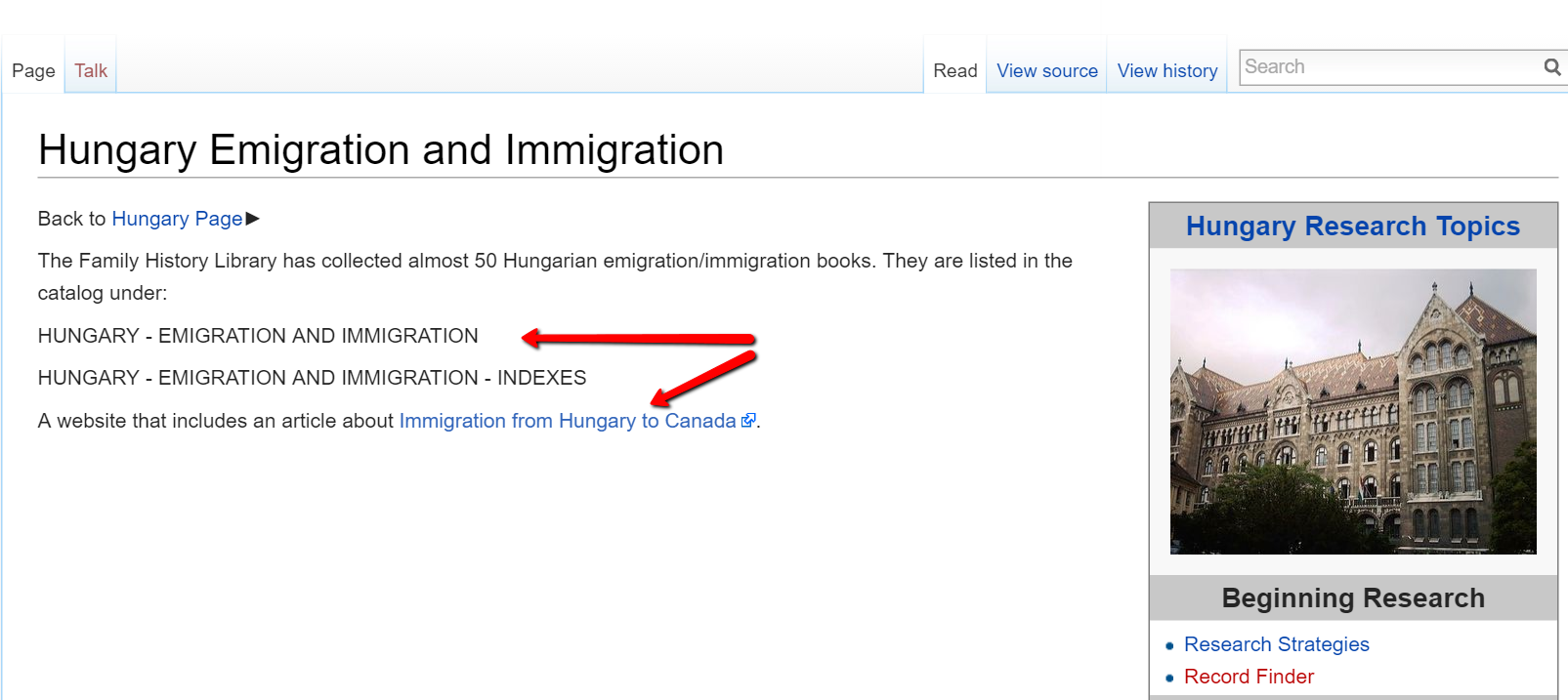
Did your emigrant (or immigrant) ancestor generate records in the country he or she left from as well as the country he or she entered? Remember to check!
MORE GEMS ON IMMIGRATION
by Lisa Cooke | Apr 16, 2016 | 01 What's New, Conferences
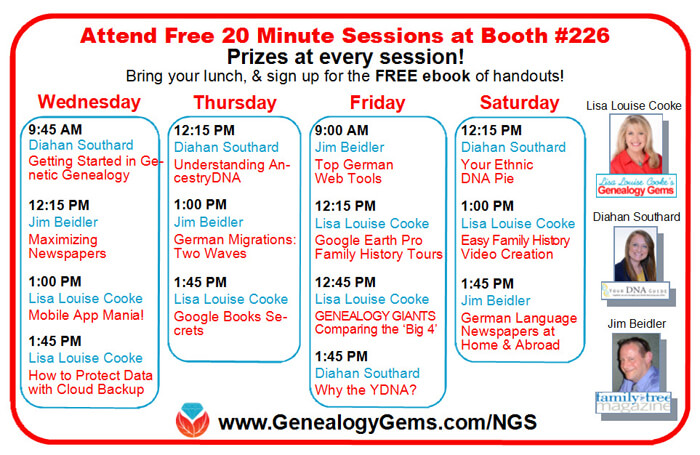

Back by popular demand: free Genealogy Gems sessions in the NGS 2016 exhibitor hall. Fabulous speakers, prizes and a free e-book to everyone who comes!
After a fabulous response last year, Genealogy Gems will once again host FREE presentations in the exhibitor hall at the National Genealogical Society conference on May 4-6, 2016 in Ft. Lauderdale.
If you’re attending NGS 2016, check out the 30-minute power sessions below, being taught by powerhouse presenters Lisa Louise Cooke, Your DNA Guide Diahan Southard and Family Tree Magazine writers Lisa Alzo and Jim Beidler. You’ve heard them on the Genealogy Gems podcast and the Family Tree Magazine podcast and you’ve read their work in the magazine and on this blog: now come see them in person!
These smaller free sessions at our booth (#228) offer a great way to meet these top speakers and hear them teach their most popular topics. Because  these sessions have been standing-room-only at recent conferences, this year we have created a brand new Genealogy Gems Theater with MORE room to sit and enjoy each session. When you attend, you can sign up for a free e-book with all the session handouts and enter to win a fabulous grand prize, too.
these sessions have been standing-room-only at recent conferences, this year we have created a brand new Genealogy Gems Theater with MORE room to sit and enjoy each session. When you attend, you can sign up for a free e-book with all the session handouts and enter to win a fabulous grand prize, too.
Click here to check out the full Genealogy Gems Theater schedule, see an exhibit room map and download a schedule and prize entry form.

by Lisa Cooke | Jan 11, 2016 | 01 What's New, Listeners & Readers, Trees
Are you a Mac genealogist? Check out these family history software for Mac recommendations sent in by Genealogy Gems listeners.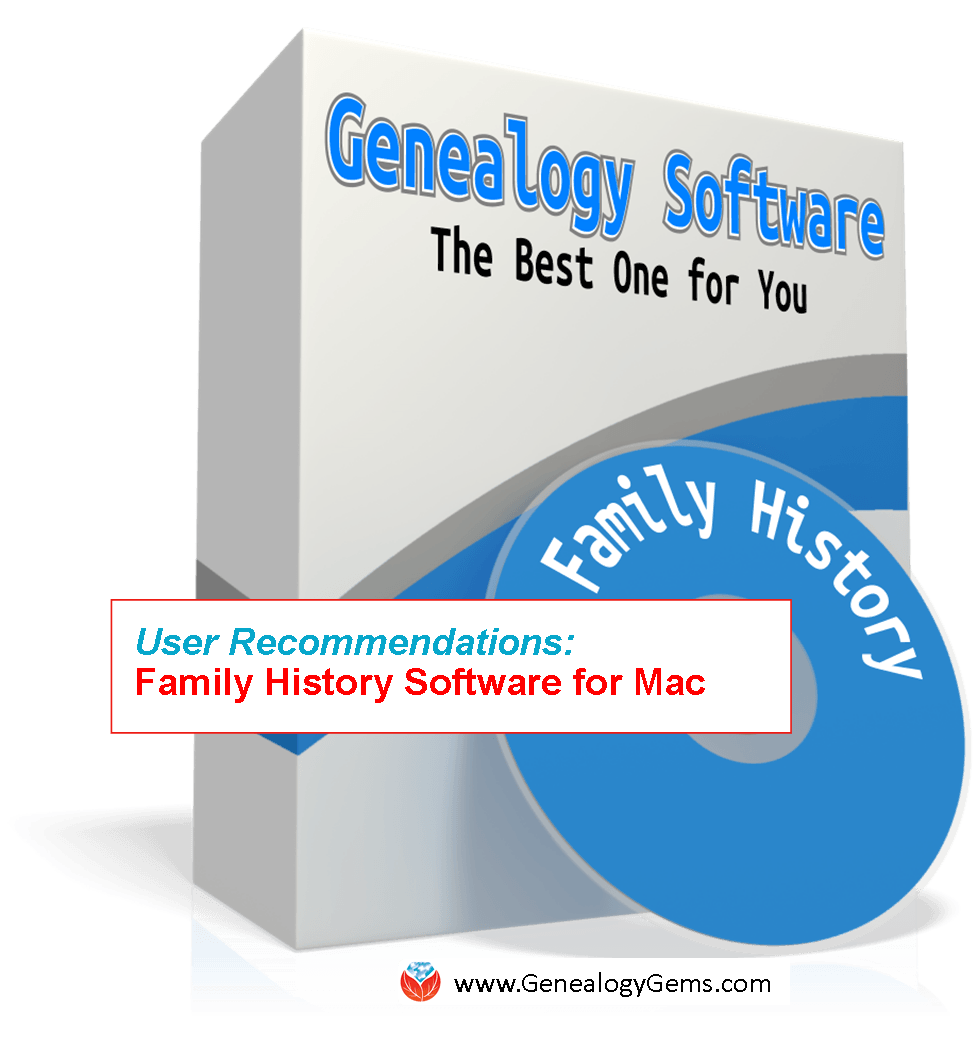
Recently we’ve been talking about the importance of keeping your master family tree in family tree software on your computer, especially in the wake of Ancestry’s announcement that they’re retiring Family Tree Maker software. Lisa has given lots of suggestions, including RootsMagic 7 for Mac, but YOU have also sent in these comments for Mac-compatible family history software.
1. MacFamilyTree 5
“On your list of software to replace Family Tree Maker for the Mac, you should take a look at MacFamilyTree 5
. The support is fast and fabulous. The graphics on screen and in print look up-to-date and easy to read.
As someone who has been using The Master Genealogist, I had to start looking for a replacement before the FTM users. My only complaint with MacFamilyTree is that you can’t attach sources to particular items of information as I can in TMG, but you can’t in any of the other genealogy software either. I miss being able to indicate that a source for the birth had the full date but only the state for the place, for example. So I haven’t given up on TMG yet because I don’t want to lose information as I migrate my data.” -Diana
2. Reunion 11
“I have received and read your website for some time, and have found many helpful ideas and comments. Your last edition (Family Tree Maker discontinued) 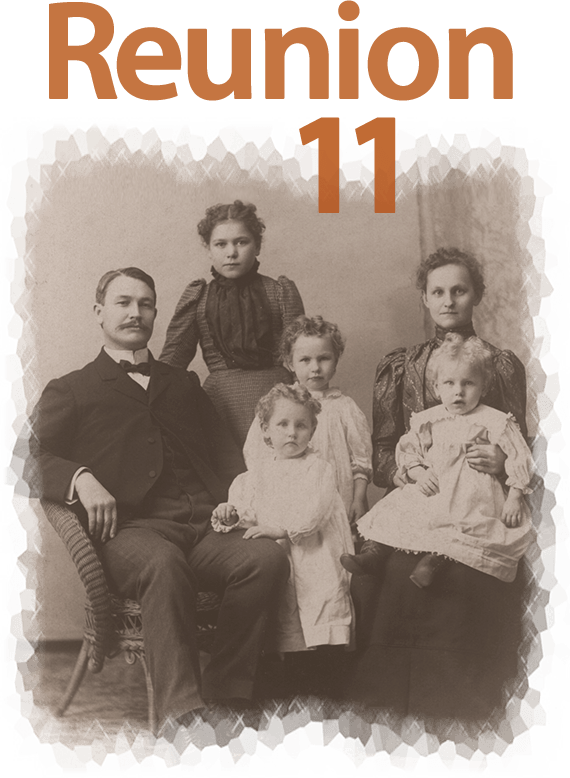 was indeed interesting, and verified how on top of things you are—thank you.
was indeed interesting, and verified how on top of things you are—thank you.
You suggested alternatives to Family Tree Maker…RootsMagic, MyHeritage, and Backblaze. (Editor’s note: Backblaze is Cloud backup for your computer, not genealogy software). While all three programs are available with versions that will work on Macs, in all fairness to Mac users, I suggest that you include (at least mention) that a great alternative for Mac is: Reunion 11 by Leister Productions. I have used this software since their beginning, and find it world-class for the Macintosh. They also have a method for moving your tree from Family Tree Maker to Reunion.” -Bill
More Family History Software for Mac
Thanks to Mac Users Diana and Bill for their recommendations. Here’s a great article from Family Tree Magazine outlining more options for genealogy software for the Mac.
More Inspiration from Genealogy Gems Like You
We love hearing from Genealogy Gems listeners and readers! Check out these posts from my “Mailbox.”
by Lisa Cooke | Oct 25, 2017 | 01 What's New, Archive Lady |
What we expect to be found in an archive is documents, photos, memorabilia and other paper-based items. But the Archive Lady Melissa Barker’s list of “most unusual discoveries” reminds us to expect the unexpected in archival collections! Read about her top ten unique and exciting archive discoveries.
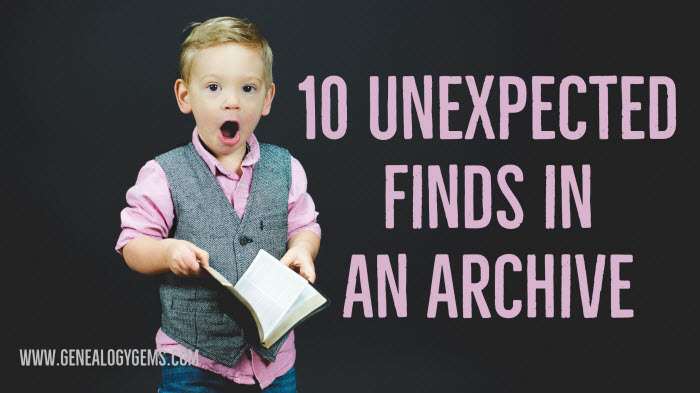
10 Unexpected Items I’ve Found in an Archive
Working in an archive everyday like I do in the Houston County, Tennessee Archives, you can come across some of the most interesting items! Here is a list of my top 10 discoveries.
1. Looney Money
This is money that was dispensed by a local business to their employees for wages. This money usually had the store or business name on it and the money could only be spent in the store or business.
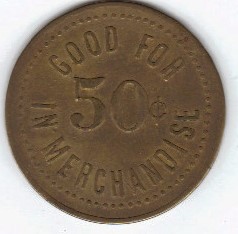
All images in this post courtesy of Melissa Barker and Houston County, TN Archives, except as noted.
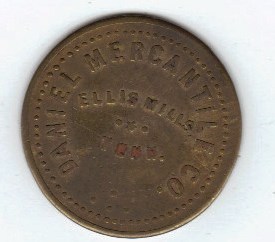
2. Straight Razor
While working on circuit court case packets, I ran across one for William Hughes who was charged with going armed with a straight razor in 1952. The actual straight razor was in the packet and just as sharp as it was back in 1952.
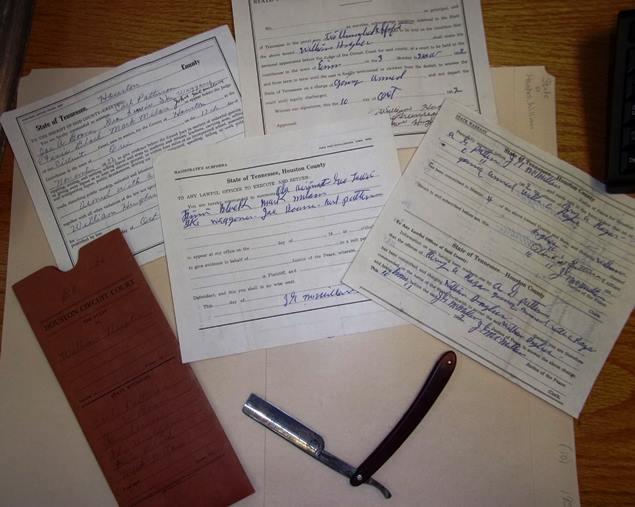
3. Fudge Pie Recipe (with a Voting Roster?!)
While processing a collection of voting and election records, I found a 1952 local city ballot that had a handwritten fudge pie recipe written on the back. I actually made the pie and it was wonderful!
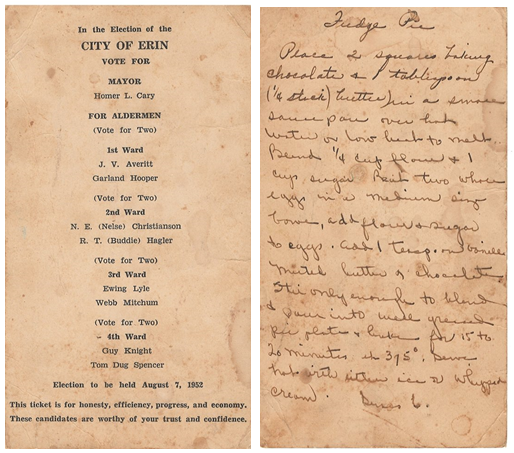
4. Lock of Hair
While processing a manuscript collection of various types of records, I found a lock of hair tied with a blue ribbon that was in perfect condition. The lock of hair was in a harmonica box and addressed to a gentleman and had been sent through the mail. So far we have not been able to determine whose lock of hair it is.
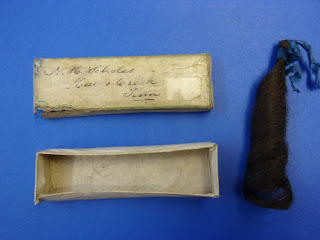
5. A 100-Year Old Vacuum Cleaner
Recently a man walked into the archives and donated a 100 year old vacuum cleaner. This vacuum cleaner is motorless and looks just like the Bissell vacuum cleaners you can buy today. The crazy thing is, it still works!
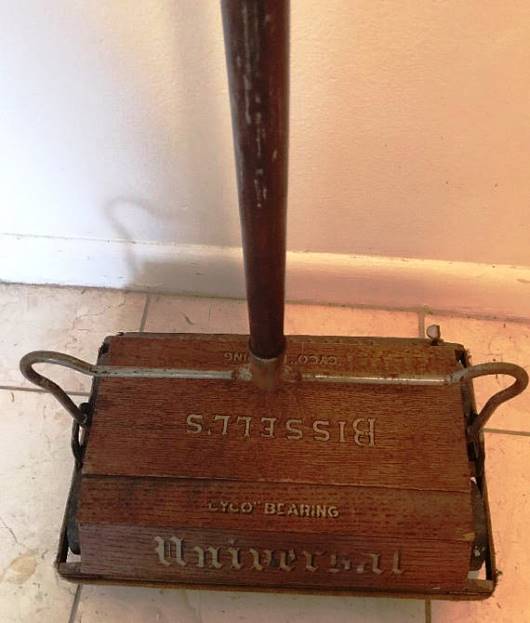
6. Snake Photo
Recently a patron donated an old photo album that had belonged to her Grandmother who had owned the local hotel back in the 1920s. The photo album included a photo of a lady holding a very, very large snake. There is a name of “Mille Viola” on the photo and it was taken at Kern Bros. Photographs in New York.

7. Moonshine
In the archives, we have come across a couple of examples of the moonshine trade. In our court records, there are numerous court cases about moonshiners. We also have several photographs of bottles of moonshine and stills. Seems it was very popular to take photographs of what the police had collected.
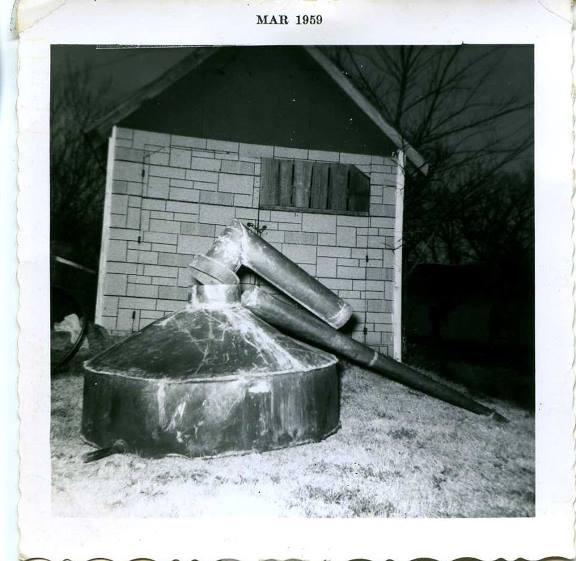
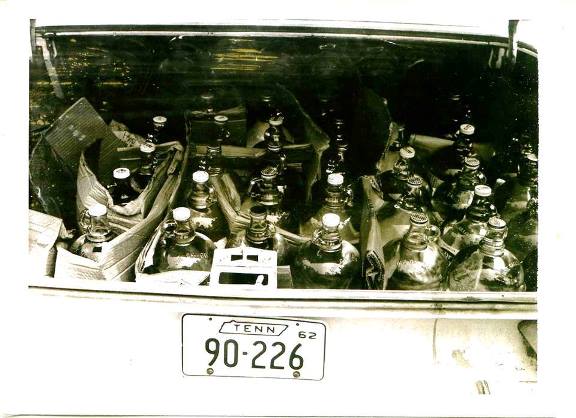
8. Grand Ole Opry
In one of the wonderful scrapbooks that we have at the Houston County, TN. Archives, there is an original 1943 Grand Ole Opry Ticket.
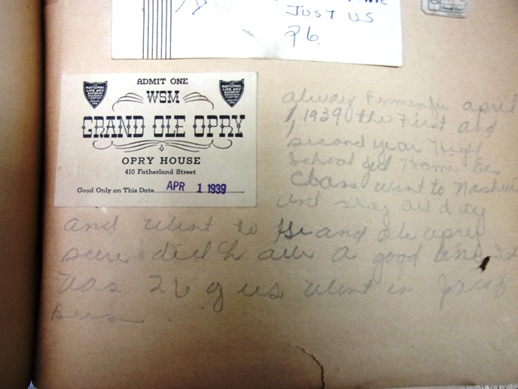
KODAK Digital Still Camera
9. Railroad Memorabilia
The railroad once went through many communities and areas including Houston County, TN. We have many items to help us remember the railroad, like railroad spikes, lanterns, and tools used to work on the railroad.
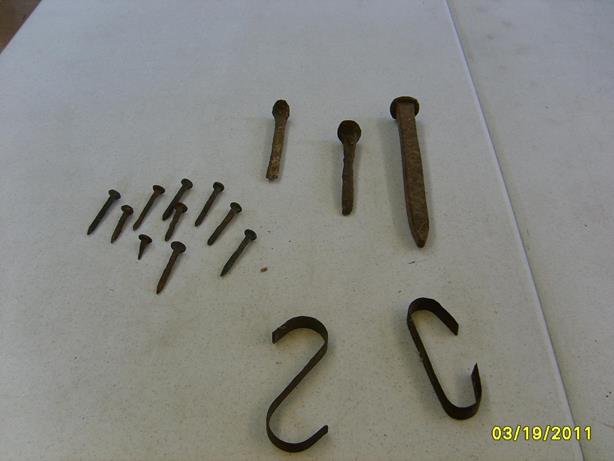
10. Dioramas
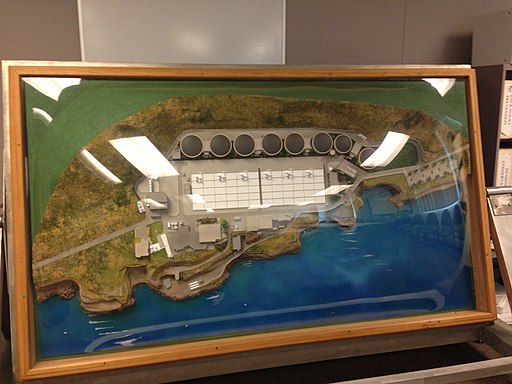
By Tracyleanne (Own work) [CC BY-SA 3.0 (https://creativecommons.org/licenses/by-sa/3.0)], via Wikimedia Commons. Click to view.
Melissa doesn’t have images of her dioramas–and every diorama is different–but here’s an example of a diorama of a wastewater treatment plant. (People create dioramas of diverse places, don’t they?)
What Have You Found in An Archive?
What treasures or unusual have you discovered in an archival collection? Tell us in the comments below!
 This post wraps up our four-week series on disaster planning for genealogists in honor of National Preparedness Month in the United States. In previous weeks, I talked about assessing our collections of family history artifacts and research materials; creating duplicates of one-of-a kind items; and protecting our most valuable items properly.
This post wraps up our four-week series on disaster planning for genealogists in honor of National Preparedness Month in the United States. In previous weeks, I talked about assessing our collections of family history artifacts and research materials; creating duplicates of one-of-a kind items; and protecting our most valuable items properly.







 these sessions have been standing-room-only at recent conferences, this year we have created a brand new Genealogy Gems Theater with MORE room to sit and enjoy each session. When you attend, you can sign up for a free e-book with all the session handouts and enter to win a fabulous grand prize, too.
these sessions have been standing-room-only at recent conferences, this year we have created a brand new Genealogy Gems Theater with MORE room to sit and enjoy each session. When you attend, you can sign up for a free e-book with all the session handouts and enter to win a fabulous grand prize, too.

 was indeed interesting, and verified how on top of things you are—thank you.
was indeed interesting, and verified how on top of things you are—thank you.












